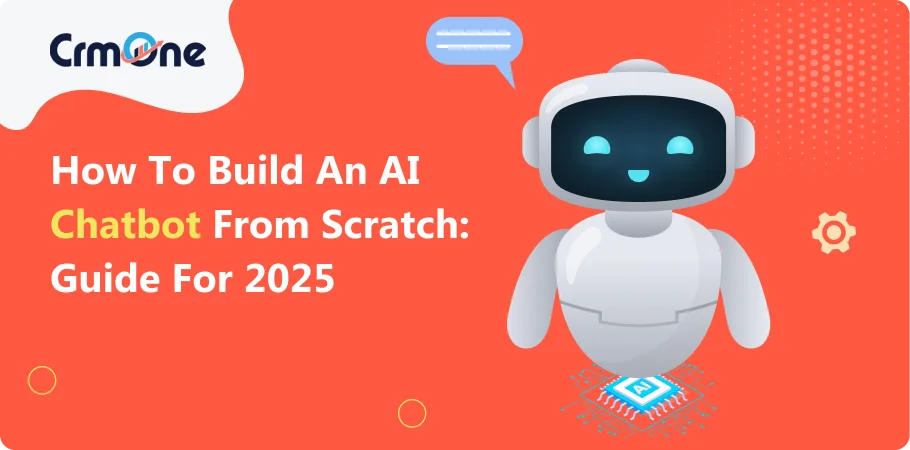In the dynamic digital conversation landscape, crafting a chatbot from scratch has become imperative for businesses aiming to optimize customer interactions. This comprehensive guide on how to build an AI chatbot from scratch is designed to demystify the process of developing your own AI chatbot, all while keeping expenses at a minimum.
Through a step-by-step approach, this guide equips entrepreneurs and developers with the essential knowledge and resources to build an AI chatbot from scratch, empowering them to navigate the complexities of digital engagement with confidence and efficiency.
AI Chatbot Market Overview
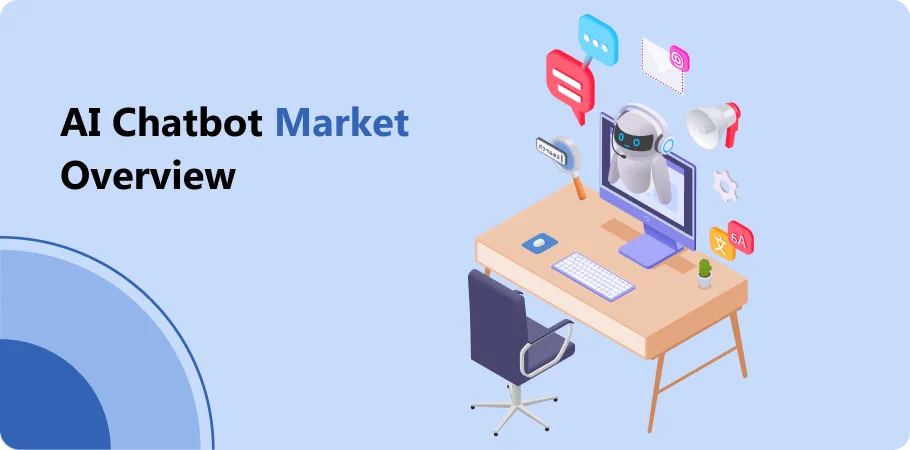
The intelligent bot market is experiencing an unprecedented surge, driven by the increasing demand for automated customer service solutions.
Businesses spanning diverse industries are rapidly adopting chatbot technology to provide personalized experiences and enhance customer engagement.
Recent research indicates that by 2025, the global chatbot market is poised to reach remarkable heights, with AI chatbot at the forefront of revolutionizing digital interactions. Companies are increasingly looking to build an AI chatbot to stay ahead in this evolving landscape.
These advanced chatbots, powered by AI, are engineered to interact flawlessly with human users, providing customized responses and effective problem-solving capabilities.
As businesses identify the potential of these intelligent chatbots in optimizing customer interactions, they are progressively incorporating these AI-enabled solutions into their digital platforms.
With the anticipated exponential growth of the chatbot market, businesses are utilizing these cutting-edge technologies to forge more dynamic and responsive customer experiences, thereby driving growth and innovation across diverse sectors.
How an AI Chatbot Benefits Your Business
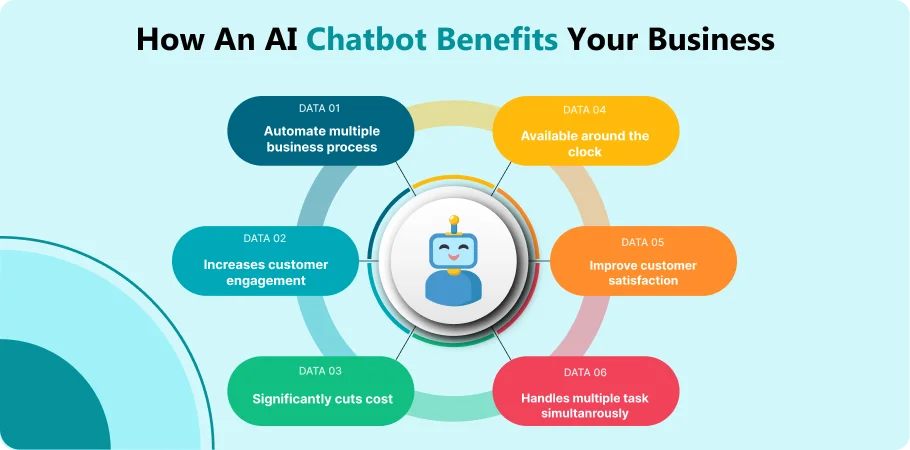
Integrating a simple chatbot into your business operations offers multifaceted benefits. First, it enhances customer service efficiency by providing instant responses to frequently asked questions, reducing the burden on human agents. Second, by leveraging AI technology, businesses can streamline their support processes, ensuring prompt assistance around the clock.
So, how can your business incorporate talk bots akin to Google Assistant? It starts with identifying the most common customer queries and programming the chatbot to respond to them. The chatbot can then engage with customers through NLP, mimicking human speech patterns.
This conversational interface fosters a more personalized interaction, enhancing user experience and building brand loyalty. Additionally, talkbots can gather valuable insights from customer interactions, enabling businesses to refine their products, services, and marketing strategies. To further capitalize on these benefits, companies are increasingly focusing on how to build an AI chatbot that effectively leverages these insights for strategic improvements.
Overall, the integration of AI-driven chatbots not only optimizes operational efficiency but also cultivates meaningful customer relationships, driving sustainable growth and competitiveness.
Types of AI Chatbots
1. Rule-based Chatbots:
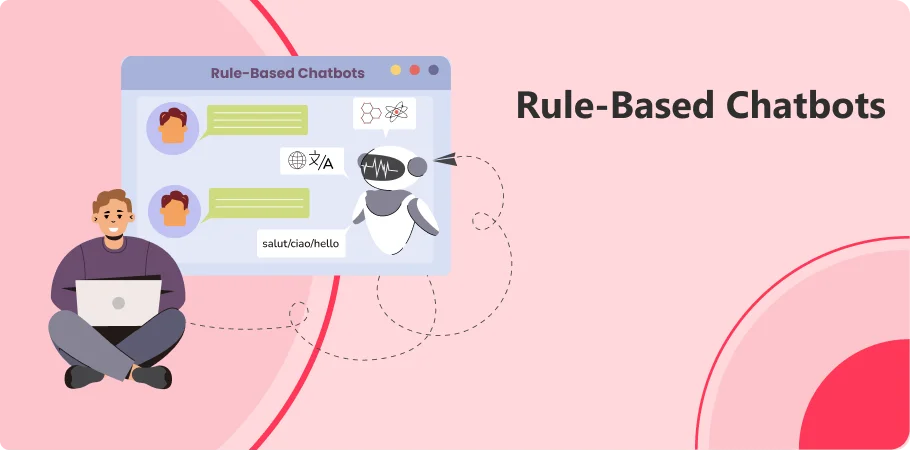
Conversational bots operate based on predefined rules and decision trees to engage with users. These chatbots are programmed to follow structured pathways during interactions, ensuring consistency in responses and guiding users through predetermined conversational routes.
With each interaction, the chat bot relies on its set rules to determine the appropriate next step in the conversation, providing users with relevant information or assistance based on their input.
Despite their scripted nature, conversational bots aim to simulate natural dialogue, offering users a seamless experience within the confines of their programmed functionalities.
The process of building chatbots involves establishing a predetermined framework and crafting responses according to specific guidelines. Developers meticulously build AI chatbots with a fixed set of rules, dictating their interactions and responses.
These guidelines serve as the backbone of the chatbot’s functionality, ensuring consistency and reliability in its communication.
Google Associate, for example, operates within such a framework, where developers program its capabilities and responses to align with predetermined guidelines.
Each interaction with Google Assistant reflects the adherence to these predefined rules, showcasing the meticulous planning and design put into its development.
Through this structured approach, AI chatbots like Google Assistant offer users reliable and consistent assistance, driven by the guidelines meticulously set by their developers.
2. NLP Chatbots:
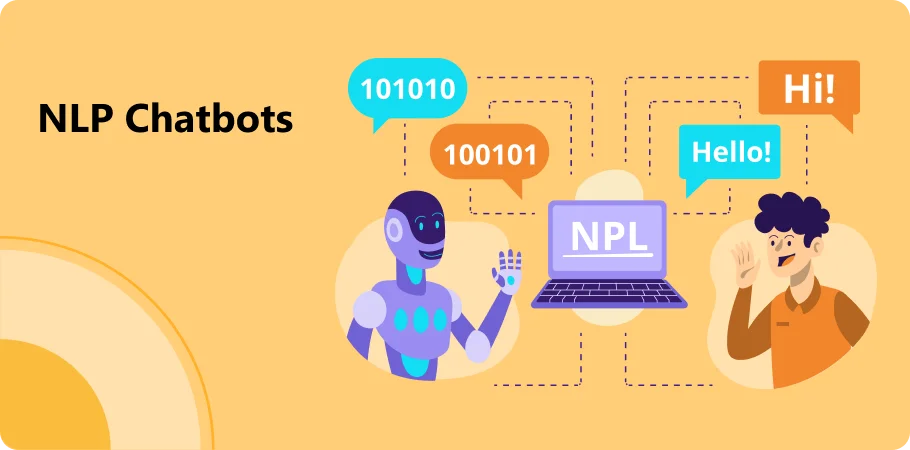
NLP talk bots leverage machine learning (ML) algorithms to comprehend and interpret human language. These algorithms are designed to analyze input text, extract relevant information, and generate appropriate responses based on the desired response.
However, it’s important to note that NLP models require large amounts of data to train effectively, and there is a possibility of misinterpretation of user queries.
Additionally, NLP models are often trained using optimization techniques such as the Adam optimizer, which helps refine the model’s parameters to improve its accuracy and efficiency in understanding and generating responses to user queries.
Through the fusion of ML algorithms and optimization methods, NLP bots strive to provide seamless interactions by understanding human language and delivering the response effectively.
A rule-based chatbot utilizes predefined instructions to interpret user input, extracting meaning, context, and intent to facilitate more natural conversations. These instructions govern the bot’s behavior, guiding it in understanding and responding to user queries effectively.
On the other hand, an NLP model analyzes user input by processing language patterns, semantics, and context to discern meaning and intent.
Unlike rule-based systems, NLP models adapt and learn from data, continuously improving their ability to comprehend and engage in conversations.
Both approaches enhance conversational interactions, albeit through distinct methodologies: rules for structured guidance and NLP for nuanced understanding.
3. Generative Chatbots:
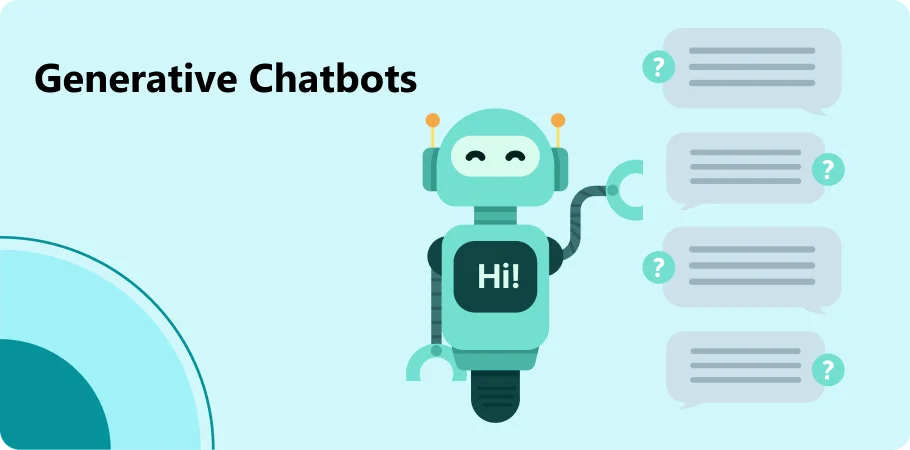
Generative chatbots represent a pivotal advancement in the realm of AI, leveraging sophisticated natural language generation techniques to emulate human-like conversations.
These bots are not confined to pre-programmed responses but rather possess the capability to dynamically generate replies based on context, user input, and the desired conversational tone.
Application developers keen on enhancing user engagement and delivering personalized experiences are increasingly turning to generative chatbot to augment their applications.
By integrating these bots, developers can offer users interactive interfaces that mimic human interactions, fostering a sense of connection and satisfaction.
To make a chatbot, developers typically employ deep learning algorithms, such as Recurrent Neural Networks (RNNs) or transformer models like GPT (Generative Pre-trained Transformer).
These models are trained on vast datasets of human conversations to grasp nuances in language and context, enabling them to generate responses that resonate with users.
The integration of generative chatbot building platforms empowers app developers to create immersive and interactive experiences for their users. Whether deployed in customer service applications, Online assistant, or gaming platforms, these bots offer a versatile tool for enriching user interactions and driving user engagement.
By harnessing advanced language generation techniques, developers can tailor chatbot to meet specific needs and preferences, ultimately enhancing the overall user experience and differentiation of their applications in an increasingly competitive landscape.
4. Task-Oriented Chatbot:
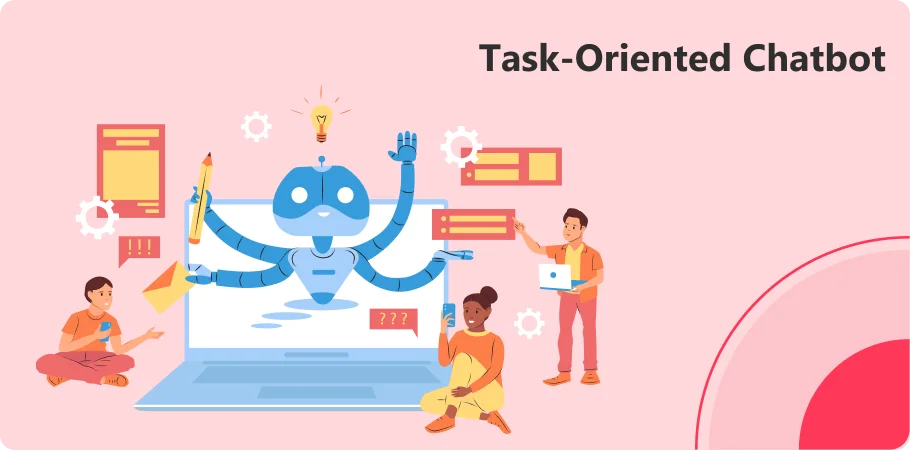
Task-oriented chatbots are meticulously crafted to efficiently execute particular functions or tasks within defined domains. Unlike their conversational flow, which aim for open-ended interactions, these bots are engineered with a singular focus: accomplishing specific objectives swiftly and effectively.
Leveraging a combination of NLU and machine learning techniques, such as neural network models, task-oriented bots can interpret user entries, discern their intent, and take appropriate actions accordingly. This targeted approach streamlines processes, enhances productivity, and augments user experiences across various domains.
In the realm of chatbot solutions, task-oriented implementations play a pivotal role in addressing specific needs and requirements within different industries and applications.
From customer service and e-commerce to healthcare and finance, organizations leverage these specialized bots to automate routine tasks, provide timely assistance, and streamline workflows.
By tailoring chatbot interactions to focus on accomplishing predefined tasks with precision and efficiency, businesses can optimize resource allocation, improve service delivery, and foster better user satisfaction.
As technology continues to evolve, the sophistication and capabilities of task-oriented bots are poised to expand, offering increasingly seamless and intuitive solutions for diverse use cases.
Task-oriented bots are engineered to concentrate on specific tasks, ranging from booking appointments and ordering food to offering product recommendations.
These bots excel in understanding user intents conveyed through text messages, enabling seamless interactions to accomplish the desired objectives.
By harnessing natural language processing nlp algorithms and machine learning techniques, developers can create an AI chatbot tailored to efficiently handle various tasks within designated domains.
5. AI Assistants:
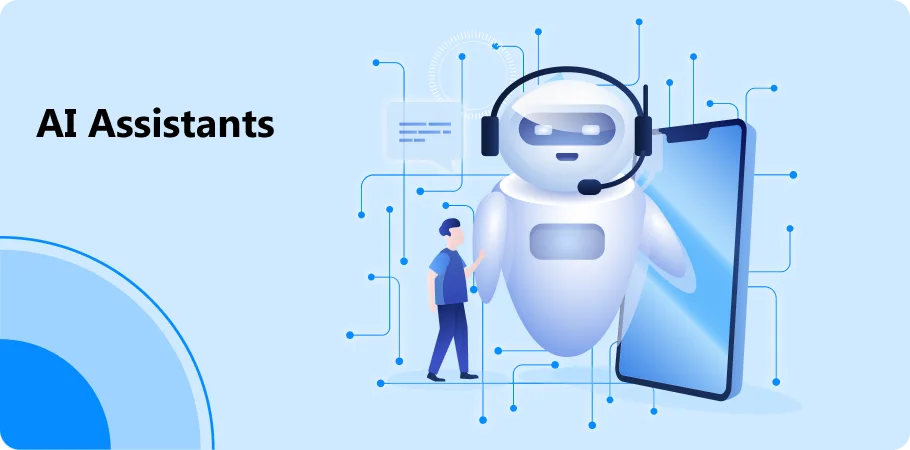
AI assistants represent a pinnacle in chatbot technology, embodying multifunctional bots with the capability to execute a diverse array of tasks while delivering comprehensive assistance.
These sophisticated entities harness advanced AI algorithms and cutting-edge NLP engine to understand and respond to user queries across various domains.
By leveraging a combination of machine learning, deep learning, and other AI techniques, AI assistants adeptly navigate complex interactions, offering users a seamless and intuitive experience.
The versatility of AI assistants enables them to handle a wide range of tasks, from providing weather updates and setting reminders to booking appointments and answering inquiries about complex topics.
Their robust NLP engine enable them to comprehend the nuances of human language, allowing for fluid communication and effective problem-solving.
Whether integrated into smart home devices, mobile applications, or enterprise platforms, AI assistants serve as indispensable tools, empowering users with comprehensive assistance and enhancing productivity across diverse contexts.
Task-oriented chatbots seamlessly integrate with diverse systems and services to provide users with personalized recommendations, reminders, and proactive support. By understanding user aim through advanced nlp, these conversational agent can access relevant data from connected platforms and databases to deliver tailored assistance.
Whether it’s recommending products based on past purchases, reminding users of upcoming appointments, or offering proactive support based on user preferences, these chatbots leverage data-driven insights to enhance user experiences and streamline interactions.
6. Hybrid Chatbots:
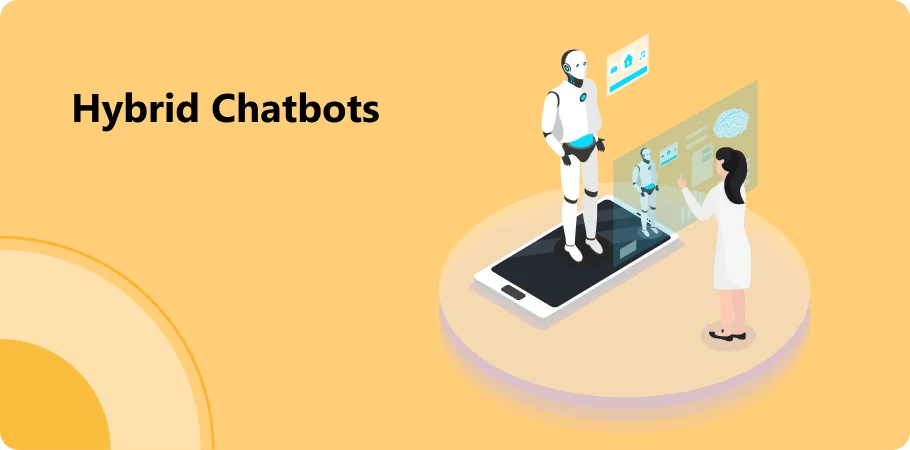
Hybrid bots represent a sophisticated fusion of AI techniques, amalgamating rule-based systems, NLP, and machine learning to offer versatile conversational experiences. In the following code, a dropout layer can be strategically incorporated within the neural network architecture to enhance the model’s robustness and prevent overfitting.
This approach allows hybrid bots to leverage the strengths of different AI methodologies, enabling them to handle a wide range of user inquiries, adapt to varying conversational contexts, and provide more nuanced and intelligent responses.
By combining these techniques, hybrid bots can deliver dynamic and engaging interactions that cater to diverse user needs and preferences, thus elevating the overall conversational experience.
Hybrid talk bots exhibit a fluid adaptation to user input and context, seamlessly shifting between rule-based responses and sophisticated language processing techniques. This versatility allows them to tailor their approach dynamically, catering to the nuances of each interaction. When developing their own chatbot, creators can harness this capability to ensure that the conversational bot maintains a balance between adhering to predefined rules and incorporating continuous learning mechanisms.
By integrating both structured rules and advanced language processing algorithms, developers can empower their chatbots to navigate a diverse array of user needs and scenarios with finesse and efficacy.
7. Voice-enabled Chatbots:
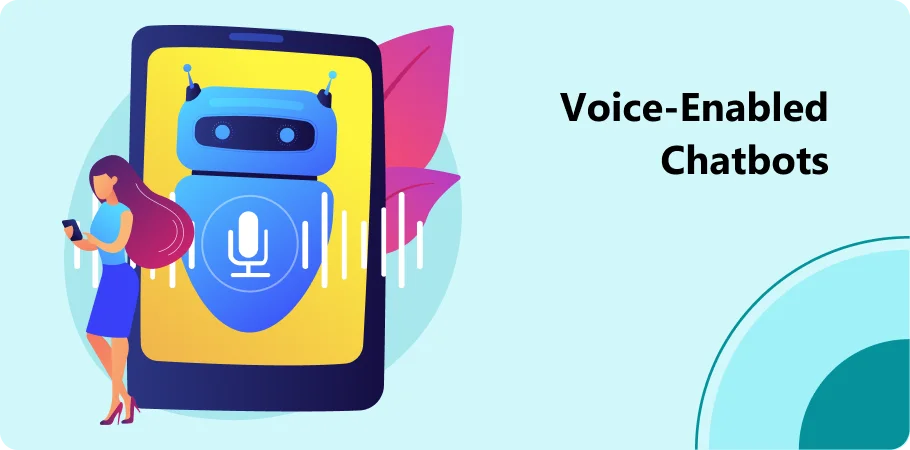
Voice-enabled bots engage users utilizing speech recognition and synthesis technologies, facilitating interactions through spoken communication. These bots leverage sophisticated algorithms to interpret user speech inputs, discerning intents and extracting relevant information to provide appropriate responses.
By integrating voice capabilities, developers aiming to build an AI chatbot can enhance the conversational bot’s accessibility and usability, allowing users to interact seamlessly without the need for traditional text-based inputs.
Through voice-enabled interfaces, talk bots extend their reach to users who prefer or require hands-free interactions, thereby broadening their applicability across diverse user demographics and contexts.
In the quest to build AI chatbot, developers recognize the significance of integrating voice-enabled functionalities to augment the conversational flow capabilities.
By embracing speech recognition and synthesis technologies, talk bots can transcend the limitations of text-based interactions, offering users a more intuitive and natural means of communication.
This integration not only enhances user experience but also opens up new avenues for interaction scenarios, empowering converse bots to cater to a wider spectrum of user needs and preferences.
By enabling users to initiate conversations through voice commands, these AI chatbot enhance interaction intuitiveness and hands-free operation. Incorporating advanced AI technologies, they facilitate seamless communication, allowing users to engage effortlessly without relying on text inputs.
Frequently integrated into virtual assistants and voice-activated devices, these chatbot offer convenient access to a plethora of information and services, enhancing user experiences through intuitive and accessible interactions.
Book a CrmOne Demo
Experience the CrmOne simplicity and power. Our experts will show you the best ways to use it and answer your questions in real time. See how CRMOne fits your needs.
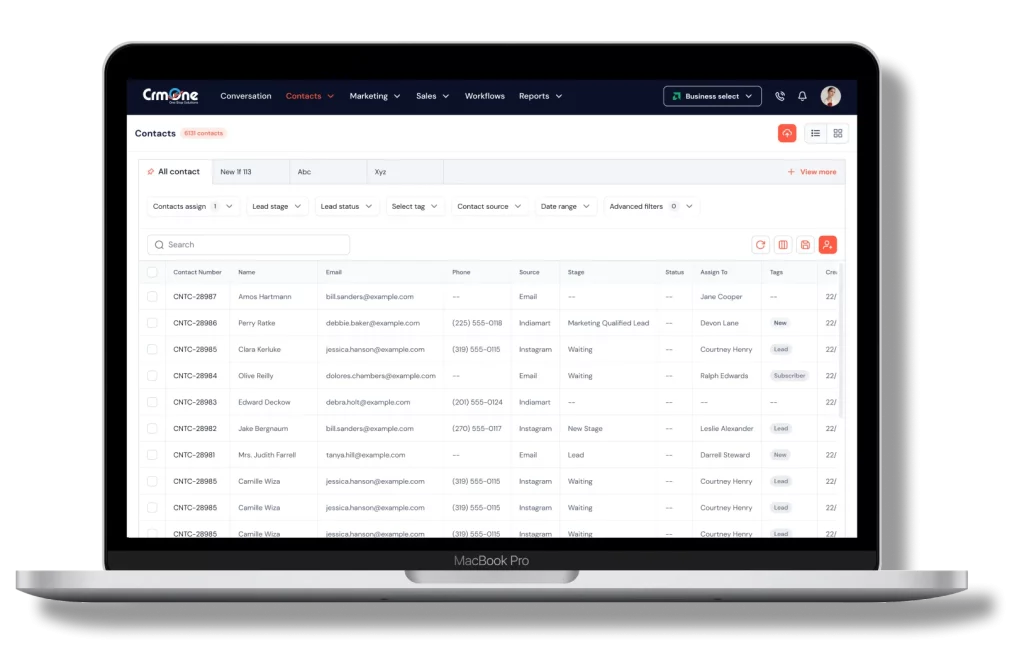
Popular Real-Life Usage of AI Chatbots
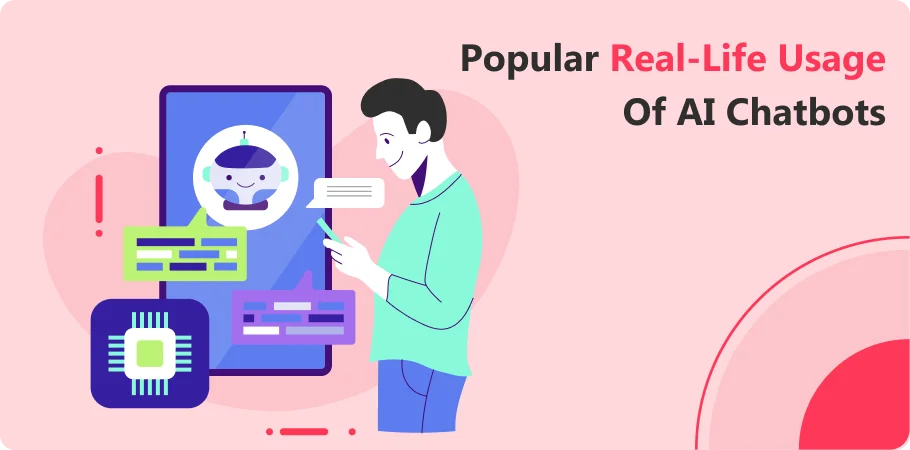
AI chatbot have become increasingly prevalent in various industries, revolutionizing the way businesses interact with customers. One popular real-life application of AI bots is in customer service.
Companies across sectors such as e-commerce, banking, and telecommunications have integrated AI bots into their platforms to provide instantaneous assistance to users.
These chatbot are programmed with NLP capabilities, allowing them to understand and respond to user inquiries effectively. By leveraging AI bots, businesses can enhance their customer support efficiency by providing round-the-clock assistance, resolving queries promptly, and reducing the need for human agent intervention.
Another noteworthy application of AI bots is in the realm of personal productivity. Many individuals now rely on their own bots to streamline daily tasks, manage schedules, and even provide personalized recommendations.
These personal AI assistants can be integrated into messaging platforms, smartphones, or smart home devices, offering users a convenient way to access information and automate routine activities.
By leveraging AI technology, individuals can delegate mundane tasks to their own bots, freeing up time to focus on more meaningful endeavors.
Moreover, AI chatbots are increasingly employed in healthcare settings to assist both patients and healthcare professionals. In the healthcare sector, AI chatbots are utilized for various purposes, including appointment scheduling, symptom assessment, and medication reminders.
Additionally, AI-powered virtual assistants are being developed to provide mental health support and counseling services.
Customer Data Collection

Intelligent chatbot, powered by advanced neural network model, have revolutionized customer interactions by adeptly gathering and analyzing vast amounts of data in real-time. Through NLP algorithms, these intelligent chatbots decipher user intents and preferences, providing valuable insights that businesses can leverage for targeted marketing campaigns and personalized recommendations.
By tracking user behaviors and preferences during conversations, chatbots can identify patterns and trends, enabling businesses to tailor their offerings to meet individual needs effectively.
However, amid the advantages of data collection and analysis, businesses must prioritize data privacy and security to foster trust and compliance with stringent regulations.
Intelligent chatbot should be engineered with robust encryption protocols and secure data storage mechanisms to safeguard user information from unauthorized access or breaches.
Additionally, businesses must adhere to privacy regulations like GDPR and CCPA, ensuring transparent data handling practices and obtaining explicit user consent for data collection and usage.
By striking a balance between leveraging AI-driven insights and respecting user privacy, businesses can harness the full potential of intelligent chatbots while fostering a trustworthy and secure environment for customer interactions.
Choose the Chatbot Platforms
Selecting the right chatbot platform is pivotal in the development journey, especially given the diverse range of options available, spanning from open-source frameworks to proprietary solutions.
Businesses need to meticulously assess their unique requirements and objectives to align with the capabilities of the chosen platform.
Leading chatbot platforms like Microsoft Bot Framework, IBM Watson Assistant, and Google Dialog flow boast robust features and user-friendly interfaces, enabling developers to craft and deploy AI-powered chatbots seamlessly.
These platforms facilitate the creation of chatbots capable of delivering human-like responses, marking a significant evolution since the inception of the first chatbot.
Through NLP and machine learning algorithms, these platforms empower businesses to create engaging conversational experiences that resonate with users, enhancing customer engagement and satisfaction.
Useful Tips on Building an AI Chatbots
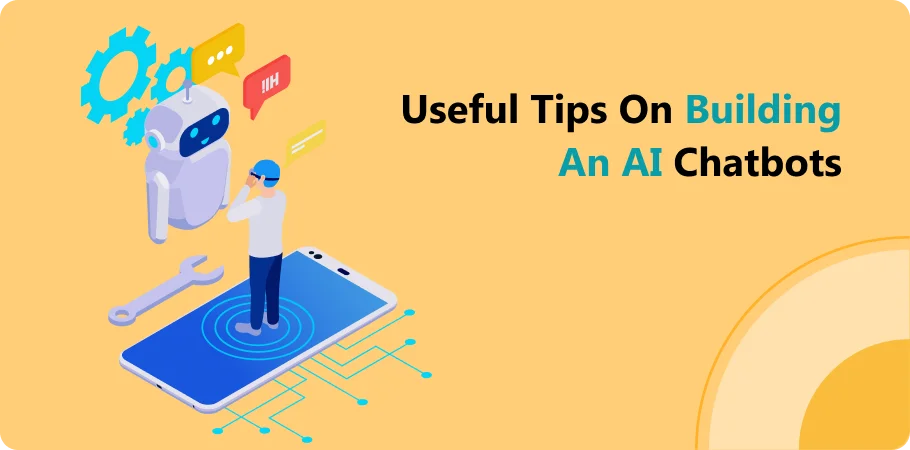
To optimize user interactions, businesses can utilize NLP tools to precisely discern user intent and sentiments.
By harnessing sophisticated language model like GPT (Generative Pre-trained Transformer), these tools analyze user inputs to accurately determine the underlying intent behind each query or statement.
This enables chatbots to deliver more tailored and relevant responses, thereby enhancing the overall user experience.
To enhance chatbot performance, incorporating machine learning (ML) algorithms is crucial for continuously refining your chatbot’s responses and improving conversational flow.
ML algorithms serve as foundational building blocks in the process to build chatbots, allowing businesses to develop chatbots capable of learning from user interactions and adapting their responses over time.
By leveraging ML, chatbots can dynamically adjust their conversational strategies based on real-time feedback, ensuring more engaging and personalized interactions with users.
To ensure a seamless user experience across multiple platforms, including websites, mobile apps, and messaging services, it’s essential to implement cross-channel communication capabilities within your chatbot application.
By enabling seamless integration across these channels, businesses can provide consistent and convenient interactions for users.
How Much Does It Cost to Build Your Own AI Chatbot?
The cost of building your own AI chatbot can vary significantly depending on various factors such as complexity, features, and development approach.
In simpler words, creating an AI chatbot involves designing a program that can interact with users, understand their queries, and respond appropriately.
The costliest aspect of building an AI chatbot typically lies in the development phase, where programmers and AI specialists work to train the chatbot to recognize patterns in language and provide accurate responses.
Additionally, integrating advanced features such as NLP or machine learning algorithms can further elevate the cost.
“One of the most significant cost factors in creating an AI chatbot is the level of customization required, often addressed through a comprehensive chatbot tutorial. Off-the-shelf solutions may offer a more affordable option, but they might lack the specificity needed for certain businesses.
Custom-built AI talkbots, on the other hand, offer the highest probability of meeting specific requirements but often come with a higher price tag due to the extensive development and testing involved, highlighting the importance of a well-structured chatbot tutorial.”
Monitor Chatbot Analytics to Improve It
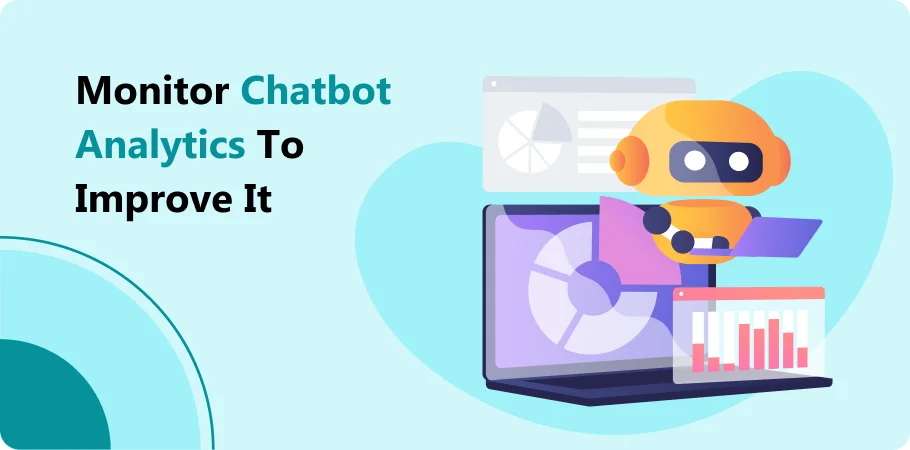
Once your AI own chatbot is deployed, continuous monitoring of its performance and analytics is imperative for ongoing optimization. By meticulously analyzing user interactions, feedback, and key performance indicators (KPIs), businesses gain valuable insights into enhancing the customer experience.
Evaluating metrics such as response times, user satisfaction ratings, and completion rates allows businesses to pinpoint areas for improvement and fine-tune their chatbot’s responses accordingly.
Moreover, monitoring the conversation flow ensures smooth and intuitive interactions, contributing to a seamless customer experience.
Regularly updating the chatbot with new features and capabilities not only keeps it relevant but also enhances its ability to adapt to evolving user expectations, ultimately improving overall customer satisfaction and loyalty.
Conclusion
In conclusion, the advent of AI simple chatbot has indeed revolutionized the way businesses interact with customers, offering unparalleled convenience, efficiency, and personalization.
By harnessing the power of artificial intelligence and natural language processing, businesses can create AI chatbots that not only automate routine tasks but also deliver meaningful and engaging experiences, elevating the overall customer experience above function.
As the chatbot market continues to evolve, businesses must stay abreast of emerging trends and technologies to remain competitive in the digital landscape.
Implementing the right tech stack is crucial in ensuring the scalability, reliability, and performance of AI chatbots, enabling seamless integration with existing systems and data sources.
With the right strategies and resources, building your own AI chatbot in 2025 is not only feasible but also essential for driving growth and innovation, empowering businesses to stay ahead in the dynamic marketplace. Unlocking the potential of your website with a chatbot conversation feature, enhancing user engagement and interaction effortlessly.
Get started for Free
Start for free today. Boost your sales by clicking the Get Started button. With CrmOne, you can manage leads, sales, and customer service all in one place.
